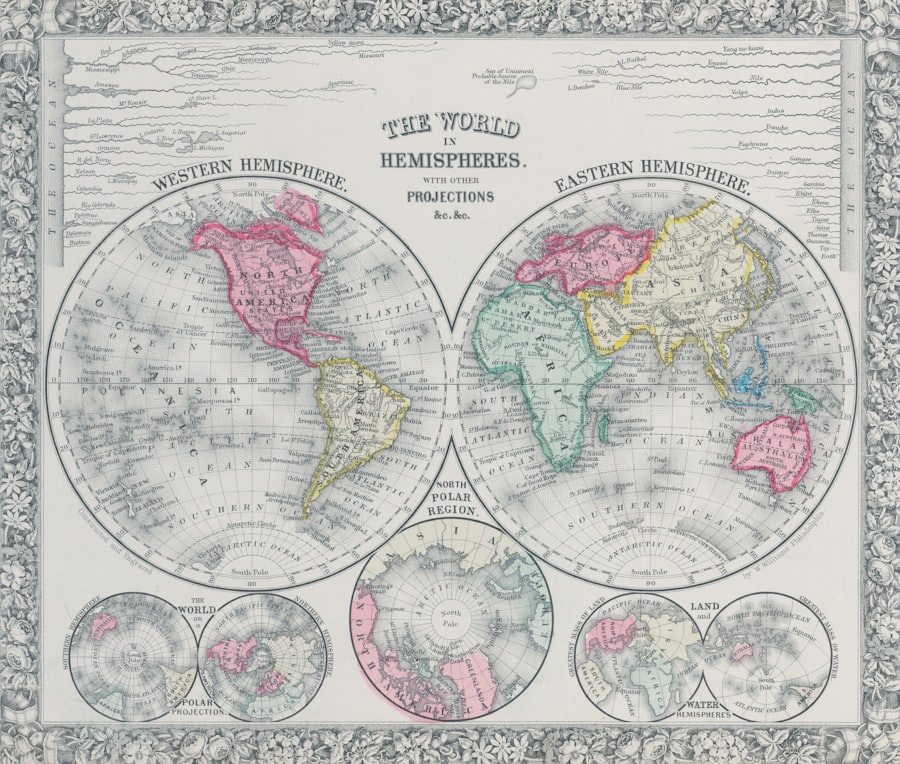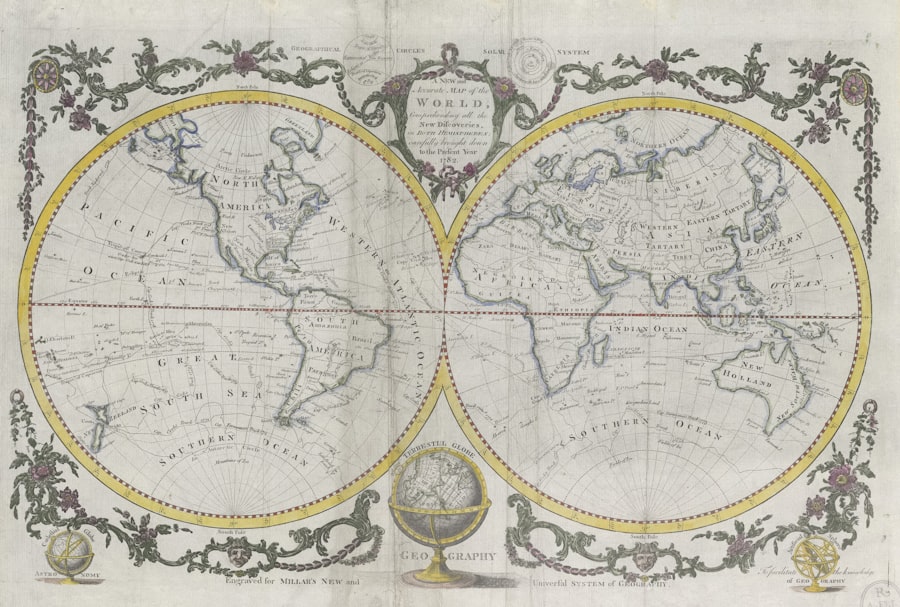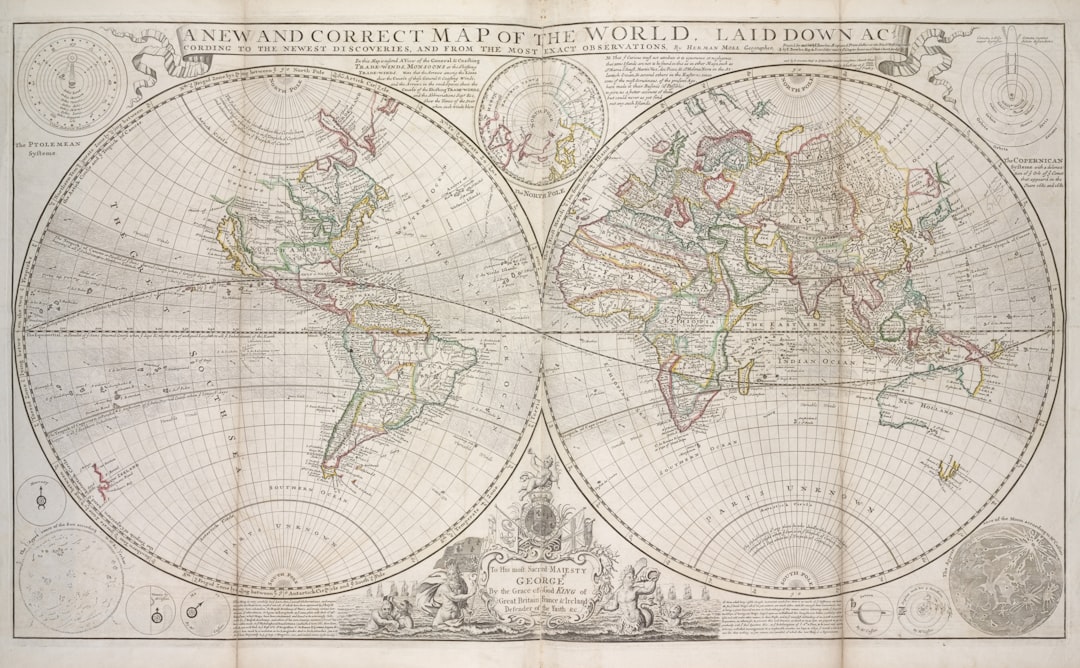The Drake Passage, a body of water that separates South America from Antarctica, is renowned for its tumultuous seas and rich biodiversity. Named after the English explorer Sir Francis Drake, who navigated these waters in the late 16th century, the passage has become a focal point for adventurers, scientists, and wildlife enthusiasts alike.
The passage is not only significant for its geographical position but also for the unique experiences it offers to those who dare to traverse its often-turbulent waters. Crossing the Drake Passage is often described as a rite of passage for many travelers heading to Antarctica. The journey can be both exhilarating and daunting, with unpredictable weather patterns and rough seas that challenge even the most seasoned sailors.
However, the allure of witnessing the stunning landscapes of Antarctica and the diverse marine life that inhabits these waters draws countless adventurers each year. The Drake Passage is more than just a stretch of ocean; it is a testament to nature’s raw power and beauty, captivating all who venture into its depths.
Key Takeaways
- The Drake Passage is a body of water between South America’s Cape Horn and the South Shetland Islands of Antarctica, known for its challenging sailing conditions.
- The geography of the Drake Passage is characterized by strong winds, large waves, and unpredictable weather patterns due to its location between the Atlantic and Pacific Oceans.
- The weather and climate in the Drake Passage are influenced by the Antarctic Circumpolar Current, resulting in cold temperatures, strong winds, and frequent storms.
- The Drake Passage is home to a diverse range of wildlife and marine life, including penguins, seals, whales, and various seabird species.
- Navigating the Drake Passage requires careful planning and consideration of weather conditions, with safety precautions and recommended equipment essential for a smooth and enjoyable journey.
Understanding the Geography of the Drake Passage
Geographically, the Drake Passage is situated between Cape Horn at the southern tip of South America and the Antarctic Peninsula. It spans approximately 800 kilometers (500 miles) in width, making it one of the narrowest points of oceanic separation between two continents. The passage is characterized by its deep waters, with depths reaching over 3,500 meters (11,500 feet) in some areas.
This unique topography contributes to the dynamic ocean currents that flow through the region, particularly the Antarctic Circumpolar Current, which encircles Antarctica and influences global climate patterns. The geography of the Drake Passage also plays a significant role in its weather systems. The convergence of cold Antarctic waters with warmer currents from the north creates a volatile environment that can shift rapidly.
This interplay of temperatures and currents results in frequent storms and high waves, making navigation challenging. The passage’s geographical features not only shape its physical characteristics but also contribute to its reputation as one of the most formidable maritime routes in the world.
Weather and Climate in the Drake Passage

The weather in the Drake Passage is notoriously unpredictable, characterized by rapid changes that can occur within hours. The region experiences a maritime climate influenced by both polar and temperate air masses. As a result, temperatures can vary significantly, with summer months (December to February) averaging around 5°C (41°F) while winter months can plunge well below freezing.
The combination of cold air from Antarctica and warmer air from the south creates a breeding ground for storms, leading to high winds and rough seas. The climate in the Drake Passage is also marked by frequent precipitation, with rain and snow common throughout the year. The passage is known for its foggy conditions, which can further complicate navigation.
Sailors and travelers must be prepared for sudden shifts in weather, as sunny skies can quickly give way to dark clouds and turbulent seas. Understanding these climatic patterns is essential for anyone planning to cross the Drake Passage, as they can significantly impact travel plans and safety.
Wildlife and Marine Life in the Drake Passage
| Category | Metrics |
|---|---|
| Whales | Several species including humpback, minke, and orca whales |
| Penguins | Adélie, chinstrap, and gentoo penguins |
| Seals | Leopard seals and Weddell seals |
| Albatross | Wandering albatross and black-browed albatross |
| Fish | Krill, Antarctic silverfish, and lanternfish |
The Drake Passage is teeming with diverse wildlife and marine life, making it a prime destination for nature enthusiasts. The nutrient-rich waters support a variety of species, including krill, which serves as a vital food source for many marine animals. This abundance of krill attracts an array of wildlife, including seals, whales, and seabirds.
Among the most notable inhabitants are humpback whales, orcas, and blue whales, which can often be spotted during migration seasons. Birdwatchers flock to the Drake Passage to observe its impressive avian population. Species such as albatrosses, petrels, and skuas are commonly seen soaring above the waves.
The sight of a wandering albatross gliding effortlessly on ocean breezes is a highlight for many travelers. The rich biodiversity of the Drake Passage not only captivates visitors but also plays a crucial role in maintaining the ecological balance of the Southern Ocean.
Historical Significance of the Drake Passage
Historically, the Drake Passage has been a significant route for explorers and navigators since the Age of Discovery. Sir Francis Drake’s expedition in 1578 marked one of the first recorded crossings of this treacherous waterway. His journey opened up new possibilities for trade and exploration, paving the way for future expeditions to Antarctica.
Over the centuries, numerous explorers have braved the passage in search of new lands and resources, contributing to our understanding of this remote region. The passage has also played a vital role in scientific research and environmental studies. As interest in Antarctica grew during the 20th century, researchers began to recognize the importance of studying its ecosystems and climate patterns.
The Drake Passage serves as a natural laboratory for scientists investigating oceanography, marine biology, and climate change. Its historical significance extends beyond exploration; it has become a focal point for understanding global environmental issues.
Navigational Challenges and Strategies

Navigating the Drake Passage presents numerous challenges due to its unpredictable weather conditions and strong currents. Sailors must contend with high winds that can reach up to 60 knots or more, creating steep waves that can exceed 10 meters (33 feet) in height. These conditions require careful planning and skilled seamanship to ensure safe passage.
Mariners often rely on advanced weather forecasting tools and satellite technology to monitor conditions before embarking on their journey. To successfully navigate the Drake Passage, experienced sailors employ various strategies. One common approach is to time crossings during periods of favorable weather, typically during the summer months when conditions are generally more stable.
Additionally, many vessels are equipped with stabilizers or other technologies designed to enhance stability in rough seas. Understanding local currents and tides is also crucial for optimizing navigation routes and minimizing risks associated with sudden weather changes.
Safety Precautions for Crossing the Drake Passage
Safety is paramount when crossing the Drake Passage due to its reputation for rough seas and unpredictable weather. Travelers are advised to take several precautions before embarking on their journey. First and foremost, choosing a reputable tour operator or vessel with experience navigating these waters is essential.
These operators often have trained crews familiar with local conditions and safety protocols. Travelers should also be prepared for emergencies by familiarizing themselves with safety equipment onboard, such as life jackets and emergency beacons. It is advisable to pack essential supplies, including medications for seasickness, warm clothing layers, and waterproof gear.
Additionally, staying informed about weather forecasts and heeding crew instructions during rough conditions can significantly enhance safety during the crossing.
Popular Routes and Destinations in the Drake Passage
Several popular routes traverse the Drake Passage, connecting travelers to some of Antarctica’s most breathtaking destinations. One of the most common routes is from Ushuaia, Argentina, often referred to as the southernmost city in the world. This route typically leads to various landing sites on the Antarctic Peninsula, including Deception Island and Paradise Bay, where visitors can explore stunning landscapes and observe wildlife up close.
Another popular destination within the passage is King George Island, home to several research stations and an array of wildlife. Many expeditions include stops at this island to provide travelers with opportunities for hiking and photography amidst breathtaking scenery. Each route offers unique experiences that showcase the natural beauty and ecological diversity of this remote region.
Recommended Equipment and Gear for Crossing the Drake Passage
When preparing for a journey across the Drake Passage, having the right equipment and gear is crucial for ensuring comfort and safety. Travelers should invest in high-quality waterproof clothing that includes insulated jackets, pants, gloves, and hats to protect against cold temperatures and moisture. Sturdy footwear with good traction is also essential for navigating wet decks or rocky shorelines during landings.
In addition to clothing, travelers should consider bringing personal items such as binoculars for wildlife watching, cameras for capturing stunning landscapes, and seasickness remedies to mitigate discomfort during rough crossings. A well-stocked backpack with snacks, water bottles, and sunscreen will enhance overall enjoyment during excursions on land or at sea.
Cultural and Scientific Expeditions in the Drake Passage
The Drake Passage serves as a vital corridor for cultural and scientific expeditions aimed at exploring Antarctica’s unique ecosystems and cultural heritage. Numerous research teams venture into these waters each year to study marine life, climate change impacts, and glacial dynamics. These expeditions contribute valuable data that informs global environmental policies and conservation efforts.
Culturally significant expeditions also take place within this region as artists, writers, and historians seek inspiration from its dramatic landscapes and rich history. These individuals often collaborate with scientists to document their findings through various mediums while raising awareness about environmental issues facing Antarctica today.
Tips for a Smooth and Enjoyable Journey through the Drake Passage
To ensure a smooth and enjoyable journey through the Drake Passage, travelers should prioritize preparation and flexibility. Staying informed about weather conditions before departure allows individuals to adjust their plans accordingly while remaining open-minded about potential changes during their journey. Engaging with crew members onboard can enhance the experience by providing insights into navigation techniques or wildlife spotting tips.
Additionally, participating in onboard lectures or workshops can deepen understanding of this unique environment while fostering connections with fellow travelers who share similar interests in exploration.
With proper preparation and an adventurous spirit, travelers can create lasting memories while navigating one of nature’s most awe-inspiring waterways.
If you’re interested in exploring more about the Drake Passage and its significance on the world map, you might find the article on MyGeoQuest particularly enlightening. The Drake Passage, known for its challenging navigation conditions, is a crucial maritime route connecting the Atlantic and Pacific Oceans. For a deeper dive into the geographical and historical aspects of this region, you can check out this
